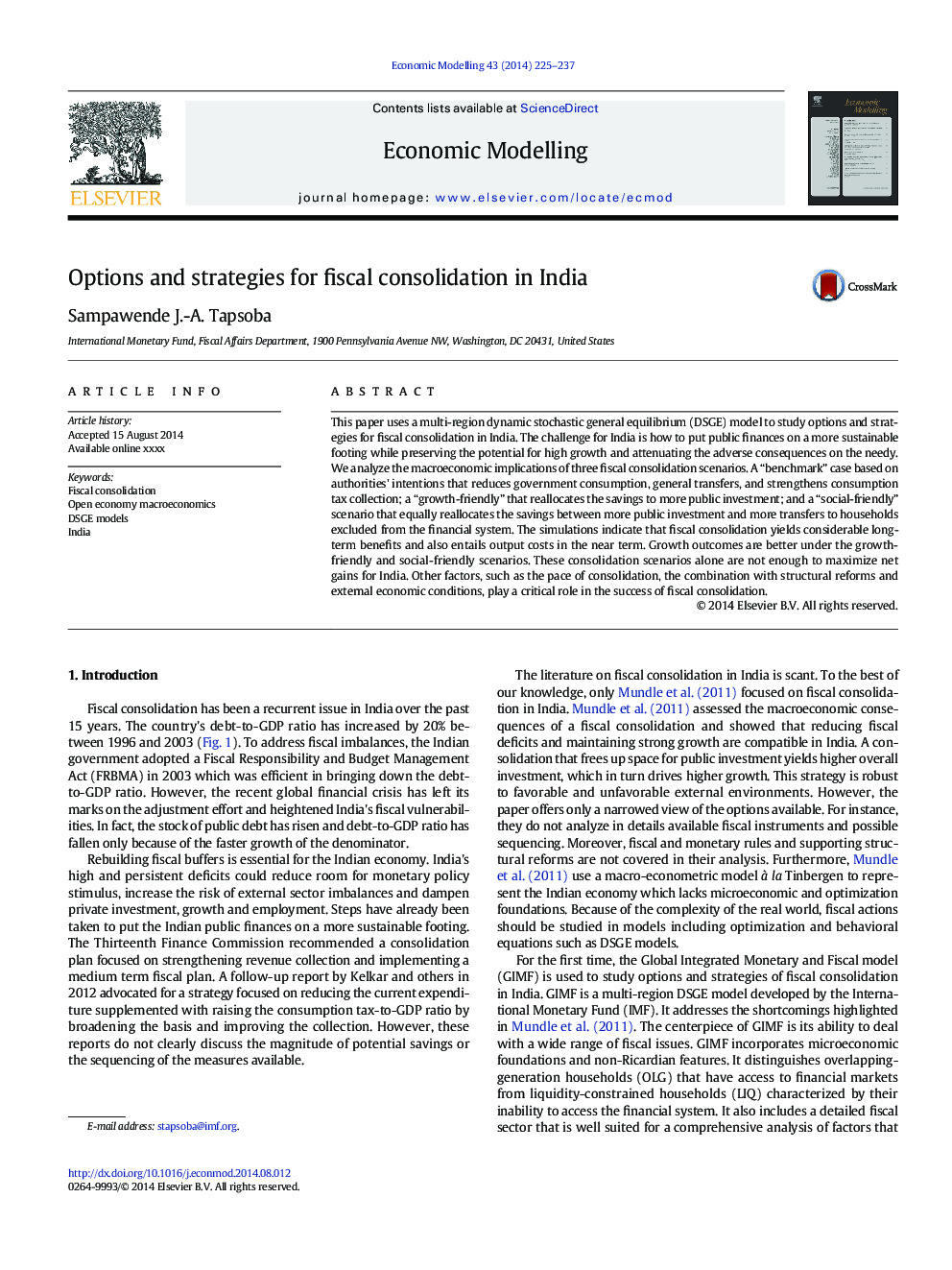| Article ID | Journal | Published Year | Pages | File Type |
|---|---|---|---|---|
| 5054181 | Economic Modelling | 2014 | 13 Pages |
Abstract
This paper uses a multi-region dynamic stochastic general equilibrium (DSGE) model to study options and strategies for fiscal consolidation in India. The challenge for India is how to put public finances on a more sustainable footing while preserving the potential for high growth and attenuating the adverse consequences on the needy. We analyze the macroeconomic implications of three fiscal consolidation scenarios. A “benchmark” case based on authorities' intentions that reduces government consumption, general transfers, and strengthens consumption tax collection; a “growth-friendly” that reallocates the savings to more public investment; and a “social-friendly” scenario that equally reallocates the savings between more public investment and more transfers to households excluded from the financial system. The simulations indicate that fiscal consolidation yields considerable long-term benefits and also entails output costs in the near term. Growth outcomes are better under the growth-friendly and social-friendly scenarios. These consolidation scenarios alone are not enough to maximize net gains for India. Other factors, such as the pace of consolidation, the combination with structural reforms and external economic conditions, play a critical role in the success of fiscal consolidation.
Related Topics
Social Sciences and Humanities
Economics, Econometrics and Finance
Economics and Econometrics
Authors
Sampawende J.-A. Tapsoba,
